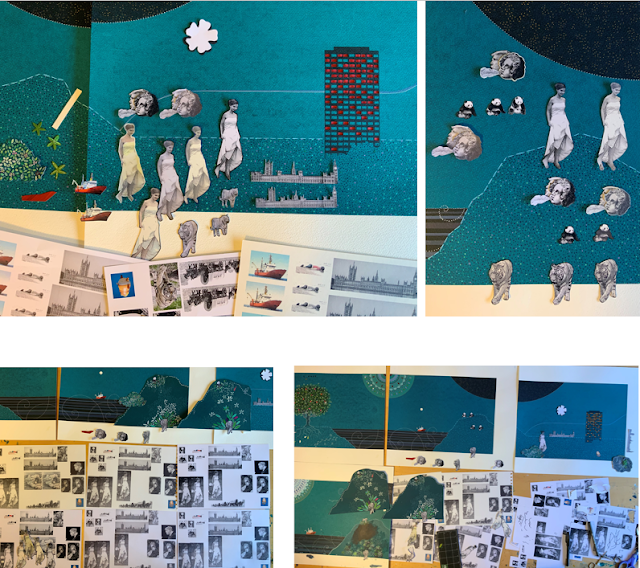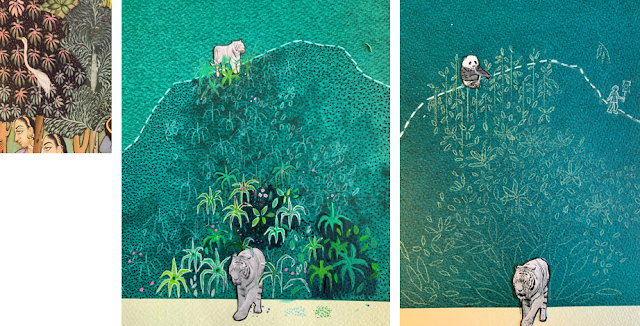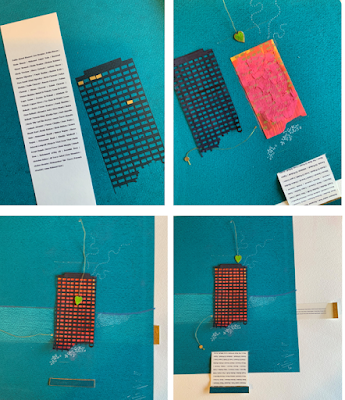Collage paper, tone, tints and outlines

To test tonal contrast, paper colour and tinting, I have printed dozens of versions of Jo Cox, pandas, Alan Kurdi, tigers, the Aquarius rescue ship, cherubs and Trump on different papers and with different print-settings. I am about to stick the first collage elements to the background so it is a pretty crucial decision. The to right image shows a choice between the shortlisted approaches and I opted for tonal contrast on a white background with fine black or fine white outlines depending on location. To my eye, this approach seemed to be more punchy and complemented the painted elements more effectively. Now to commit and glue!


